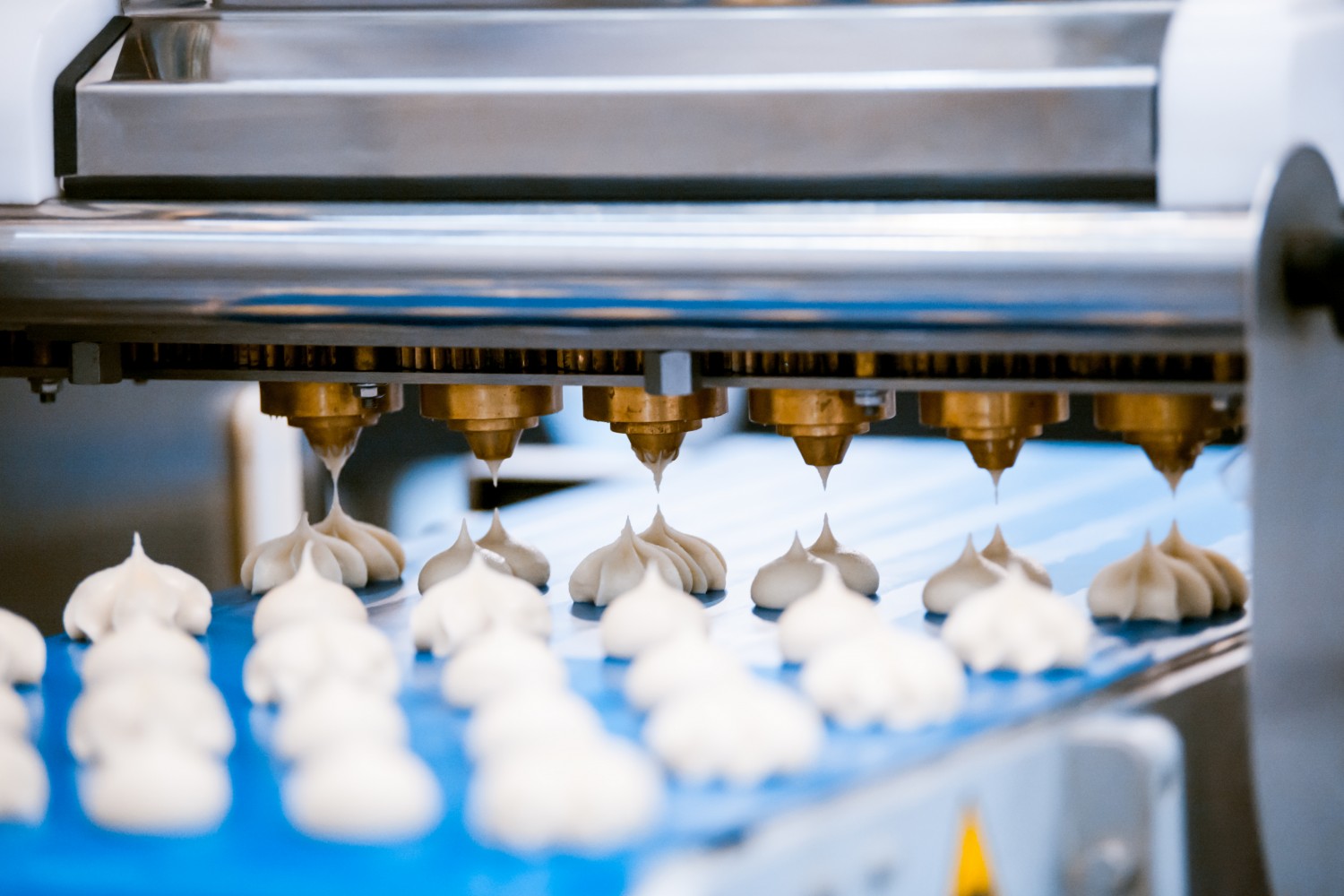17/06/2020
What are food grade lubricants?

A challenge for the food industry
Large-scale food processing requires machines such as pumps, mixers, tanks, hoses, pipes, chain drives and conveyor belts. Machines that are used in food processing companies face similar lubrication challenges as those used in non-food processing companies. Lubricants have to provide a similar level of protection and so need to have good pumpability and good oxidation, hydraulic and thermal stability. Furthermore, particular applications in the food and feed industry count on lubricants that do not reduce in performance when they come into contact with food products, certain process chemicals, water or bacteria. That is why many lubricants used in conventional industry are not permitted in the food industry for safety reasons.
High requirements for food grade lubricants
Food grade lubricants are lubricants that are acceptable for use in meat, poultry and other food processing equipment, applications and factories. The different types of lubricants are divided into categories based on the likelihood that they will come into contact with foods. They are designated across the world as either H1, H2 or H3. The approval and registration of a new lubricant in one of these categories depends on the ingredients used in the compound. Although it is never the intention that lubricants will be able to contaminate raw materials or end products, the consequences when a product does becomes contaminated with a lubricant are rarely more acute than in the food processing industry. This industry draws up protocols and performance requirements that go far beyond those for typical industrial lubricants. We will look below at the basic differences between H1, H2 and H3 lubricants, their requirements and compositions and also consider how to choose the right lubricant. This choice is important for both food safety and also for the reliability of machines.
The three designations are described below:
H1 lubricants are food grade lubricants used in food processing environments where there is the possibility of occasional contact with food. These lubricants may only consist of one or more approved base oils, additives or thickening agents that are specified in a universal protocol.
H2 lubricants are lubricants that are used on equipment and machine parts in locations where there is no possibility of contact between the lubricant or lubricated surface and food. Since there is no risk that they will come into contact with food, there is no defined list of acceptable ingredients for H2 lubricants. However, these lubricants are not permitted to contain heavy metals such as antimony, arsenic, cadmium, lead, mercury or selenium. They are also not permitted to contain carcinogenic substances such as mutagens, teratogens or mineral acids.
H3 lubricants, which are also referred to as soluble or edible oils, are used for cleaning and for preventing rust on hooks, vehicles and similar equipment.
Permitted base oil for lubricants
The list of approved base oils varies, according to whether the food grade lubricant is classed as H1 or H2. The guidelines for H2 lubricants for basic stock are less restrictive and consequently allow a wider variety of base oils. Many products used in industrial (non-food) factories are also used in food factories for H2 applications. H1 lubricants are much more restrictive since they are designed to allow for accidental exposure to the processed food. H1 approved lubricants can be both mineral-based and synthetic.
Lubricants based on petroleum that are used in H1 lubricants for food are either industrial white mineral oils or white, USP-type, mineral oils. They are highly refined and colourless, tasteless, odourless and non-staining.
Synthetic H1 lubricants are often polyalphaolefins (PAO). Compared to white mineral oils, they have a considerably higher oxidation stability and greater resistance to high operating temperatures. Other approved H1 synthetic base oils are polyalkylene glycols (PAG). These lubricants are increasingly being used at high temperatures. Dimethylpolysiloxanes (silicones) with a high viscosity are also permitted for H1 lubricants. Silicones have an even higher thermal and oxidation stability than PAO and PAG base oils.
Permitted base products, additives and thickening agents
Base oils are often not capable of meeting the strict requirements placed on the working environment in the food processing industry. In order to improve the performance of base oils, they are mixed with additives. Food agencies prescribe the types of antioxidants, corrosion inhibitors, anti-wear, extreme pressure additives, and the concentration.
Greases are lubricating oils to which a thickening agent has been added. Approved grease thickening agents include aluminium stearate, aluminium complex, organoclay and polyurea. Aluminium complex is the most common H1 grease thickening agent. Thickening agents can withstand high temperatures and are water-resistant, which are important properties for food processing applications.
Which machines need which food grade lubricants
Choosing a H1 or H2 lubricant can be a challenge. A lubricant used on a transport system that passes above a food line must be a category H1 oil, whereas a transport system that passes below a food line can use a H2 oil.
Since there are restrictions on the use of additives in H1 lubricants and only mineral oils were used in the past as a base oil, in certain cases H1 lubricants offer lower protection and have a shorter working life. Now that synthetic substances are being used, some H1 lubricants can perform better than non-food lubricants. This is important to be enable consolidation and to prevent accidental cross-contamination between H1 and H2 oils or contamination of food products by H2 oils. Using H1 foods does not rule out the need for proper maintenance of all machine components. H1 lubricants are still only approved for minimal, occasional contact.

